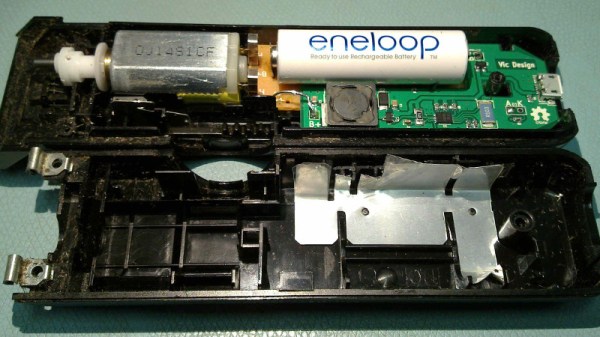You just can’t get a decent beard trimmer these days! At least that’s what [Peter Franck] found when his trusty Panasonic finally expired after a couple of decades and a few replacement batteries. The shaver’s PCB contained a mains-powered NiCd charger which had comprehensively released its magic smoke, and the expensive replacement trimmers he bought simply didn’t cut the mustard.
Many people would have given up in despair, but he persevered, and produced a custom replacement board containing a Maxim DS2710 single-sell NiMH charger, and an AA NiMH cell. It fits perfectly into the space vacated by the previous board, and takes its charge through a micro-USB socket on the edge of the PCB.
It’s interesting to note that NiMH-based projects have in recent years become a comparative rarity on these pages compared to ones using Li-ion or Li-poly cells. This is an inevitable progression on cost, size, and power density grounds, but it’s still worth knowing about projects using the older battery chemistry. He remarks that his razor is now future-proofed, but we’d probably have fitted a USB-C conector before making that assertion. Either way, it’s a neat piece of work that has achieved its aim of making an expired razor useful again. We’ve brought you another razor fix in the past, though a much less sophisticated one.

















